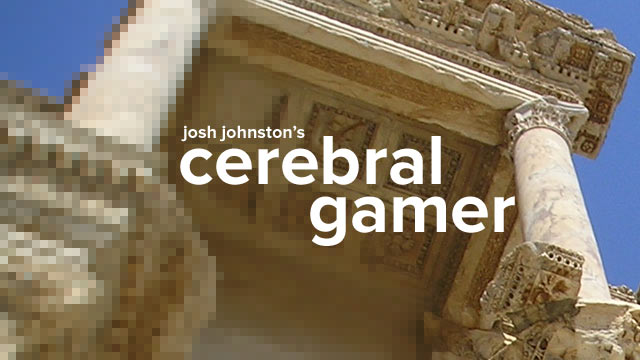
WARNING: this editorial contains a few spoilers of some well-known games, although most of the games are at least a few years old. If you haven’t played, say, Eternal Darkness, Chrono Cross, or a Baten Kaitos game and you don’t want them spoiled for you, turn away now.
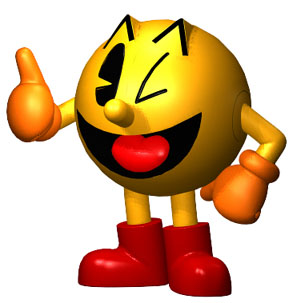 The notion of the protagonist has come a long way since the beginnings of video gaming. Early heroes like Pac-Man or Pitfall’s Harry, while artistic, were essentially placeholders for a gameplay concept, whether it be gobbling pellets or swinging across swamps. Even the iconic Mario, with his playful plumber’s garb, was (and still is, for the most part) a device for a style of play rather than a case study in character.
The notion of the protagonist has come a long way since the beginnings of video gaming. Early heroes like Pac-Man or Pitfall’s Harry, while artistic, were essentially placeholders for a gameplay concept, whether it be gobbling pellets or swinging across swamps. Even the iconic Mario, with his playful plumber’s garb, was (and still is, for the most part) a device for a style of play rather than a case study in character.
The vanilla personality of protagonists was not limited to platformers or action games. The first Final Fantasy consisted of four heroes who had no backstory and seemed to pass through the plotline rather than exist as part of it. The Legend of Zelda‘s Link certainly taught us a lot about Hyrule and even Ganon, but precious little about himself. Samus Aran, the lone bounty hunter of Metroid, did much as Link did, exposing a rugged world without really exposing much of her own psyche.
My guess is that the reason for such shallow character development lies in the philosophy of early video game developers. Games were not really envisioned as movies so much as electronic board or card games; Nintendo, after all, was not originally a movie company but a purveyor of playing cards. In a board game or card game, the protagonist is the player and has a personality generally like the player. With early games, developers simply took the underlying concept of a board game or card game and superimposed it in an interactive medium — Poker on television, if you will.
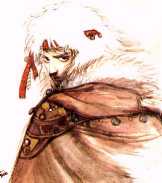 As time went on, though, character study became a more integral part of gaming. Final Fantasy games beyond the first moved away from characters as interchangeable parts and toward characters that had personalities and histories. (Cecil’s story of redemption in Final Fantasy IV represents a landmark moment for gaming protagonists.) SNES versions of Link and Samus were given fleshed out storylines and personalities, whether it be Link’s home and family in A Link to the Past or Samus’s strange relationship with oversized parasitic aliens in Super Metroid. No longer just an avatar for the player to live through, the protagonist began to represent a larger piece of an interactive movie with grander designs.
As time went on, though, character study became a more integral part of gaming. Final Fantasy games beyond the first moved away from characters as interchangeable parts and toward characters that had personalities and histories. (Cecil’s story of redemption in Final Fantasy IV represents a landmark moment for gaming protagonists.) SNES versions of Link and Samus were given fleshed out storylines and personalities, whether it be Link’s home and family in A Link to the Past or Samus’s strange relationship with oversized parasitic aliens in Super Metroid. No longer just an avatar for the player to live through, the protagonist began to represent a larger piece of an interactive movie with grander designs.
In recent years, we’ve seen main characters evolve in a different direction as well: forward. I’m not just referring to increased abilities or better equipment, although those certainly do mark character development in many games. I’m talking about the character’s personality evolving as the game goes along. One of my more meaningful experiences is watching a main character develop strength of character and come into his or her own as a hero, such seeing Eternal Darkness heroine Alexandra Roivas evolve from a naive young girl to a willful warrior against ancient deities.
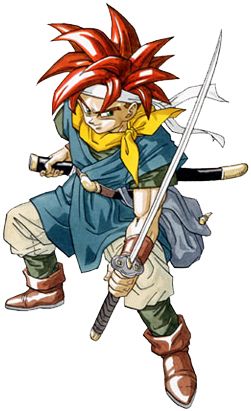 Less, too, can sometimes be more. Crono of Chrono Trigger fame is one of gaming’s most beloved characters not for his elocution (he is a silent protagonist, after all) but for his quiet heroism and his growth into a warrior of light who stands up for the oppressed. His value is amplified when he is suddenly killed off halfway through the game, going from a character players can’t remove from the party to a character absent altogether. When players later discover there is a chance to travel back and save the young boy, the reunion that ensues speaks more to his value than any words Crono himself might have used.
Less, too, can sometimes be more. Crono of Chrono Trigger fame is one of gaming’s most beloved characters not for his elocution (he is a silent protagonist, after all) but for his quiet heroism and his growth into a warrior of light who stands up for the oppressed. His value is amplified when he is suddenly killed off halfway through the game, going from a character players can’t remove from the party to a character absent altogether. When players later discover there is a chance to travel back and save the young boy, the reunion that ensues speaks more to his value than any words Crono himself might have used.
Now, not always, I must admit, does the desire to develop full-bodied protagonists work right, especially if they lapse into formulas. I generally liked both of the Tales of Symphonia games, but both used a half-baked “he started out as an immature kid and grew into an altruistic hero” formula on Lloyd Irving and Emil Castagnier and neither was truly believable. (Both games were saved by generally good combat and a few memorable moments.) Other Tales games have applied the same formula to their leads and it has never really proven compelling.
Main character development can also be undermined when the rest of the plot fails to properly come together. Cloud Strife, main character of the highly touted Final Fantasy VII, was given the full treatment in both backstory and growth in that game, yet the game’s murky, convoluted plotline made it pretty hard to figure out just where the guy came from or where he eventually was going. The game’s movie sequel, Final Fantasy VII: Advent Children, didn’t clear much up.
Those failures make it all the more impressive when developers successfully push main characters in new and unexpected directions. Here is a sampling of some of my favorite main character designs:
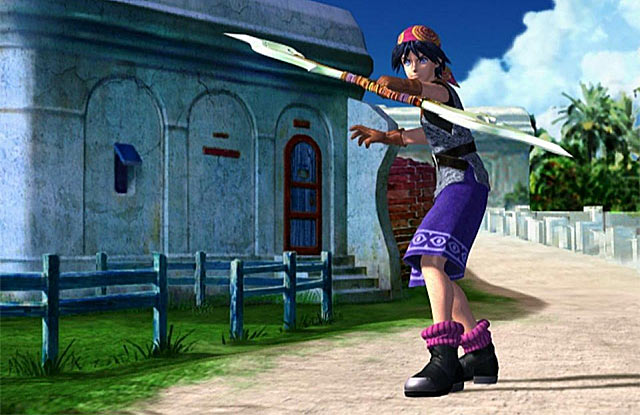
Serge — Chrono Cross.
Leave it to the writers of Chrono Trigger to push the envelope on main characters in their semi-sequel. Enter Serge, the stereotypical 17 year-old protagonist who befriends a young, mysterious girl. The game seems to be headed into thoroughly derivative territory… and then all perdition breaks loose. Before it’s all done, Serge has to come to grips with his death in an alternate timeline and his unwitting role in the destruction of an entire parallel dimension. Oh, and he spends almost half the game trapped in the body of the game’s antagonist while that evil guy goes around killing people in Serge’s name, forced to come to grips with his identity and purpose in the world.
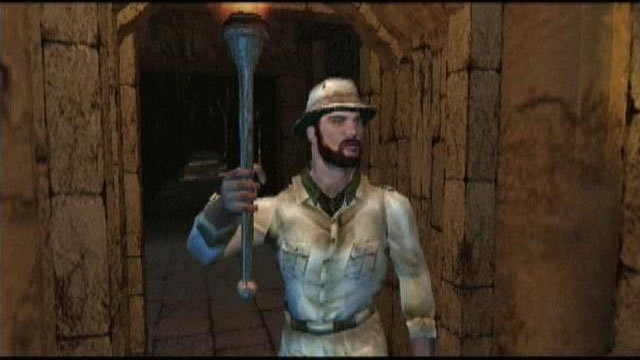
Various characters — Eternal Darkness: Sanity’s Requiem.
I’ve already mentioned chief character “Alex” Roivas, but the truth is that she isn’t the only main character. The episodic game has players acting out the parts of several different characters, including a medieval monk, an idealistic young boy, an Indiana Jones-like archaeologist, and a World War I era photographer. Each of them has their own personality and story that players grow to care about. The writers up the ante by killing off several of the early ones without prejudice, causing the player to hope that later ones somehow make it.
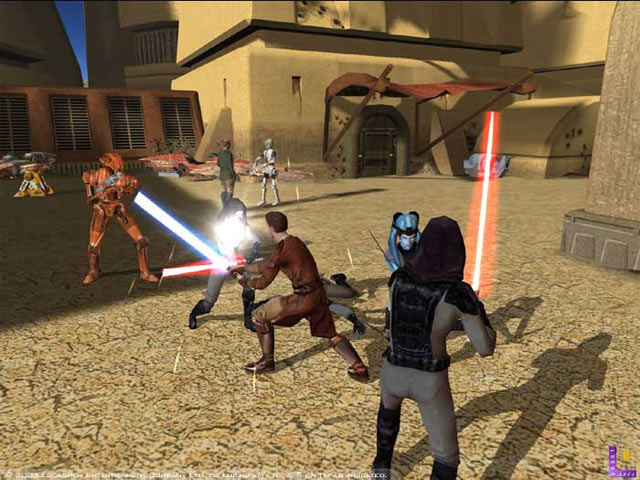
The main protagonist — Star Wars: Knights of the Old Republic.
Here’s evidence that even a player-created character can have serious depth. The player begins as a nameless grunt in the Republic army, saves a young Jedi in distress, learns that he / she has the Force, and is recruited to the Jedi academy. The game has enough fun giving players the chance to make choices between good and evil, but the real plot twist happens halfway through the game when you discover that your character is really a Sith Lord who was brainwashed by the Jedi. I know many a players who felt a collective shock upon coming to grips with their character’s heritage, the true sign of a successful plot.

Kalas and the Guardian Spirit — Baten Kaitos: Eternal Wings and the Lost Ocean.
This game wasn’t perfect but it was the most innovative use of the player I’ve seen in a game. The main character is in one sense the one-winged 17 year-old Kalas, but the player is not Kalas. Instead, the player is a “spirit guardian” that inhabits Kalas and augments his abilities. This spirit character advises and interacts with Kalas, who in turn breaks the fourth wall in talking to the player spirit. If that wasn’t enough, halfway through the game the developers drop a major bomb by informing the spirit that Kalas is in fact conspiring for evil and has erased the character spirit’s memory before faking the first encounter that started the game. Kalas eventually comes around but not before the player has to come to grips with a stunning betrayal.
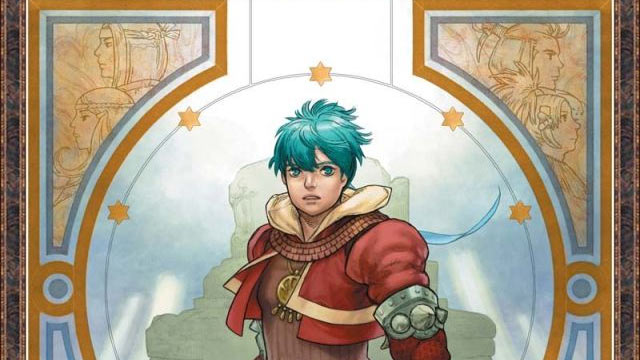
Sagi and the Guardian Spirit — Baten Kaitos: Origins.
This prequel to Baten Kaitos: Eternal Wings and the Lost Ocean came with its own main character bombshell that was most effective for those who had played the first game. Once again the player is a spirit who advises and enhances a young boy, in this case a soft-spoken lad named Sagi. At one point in the game, though, the player finds out that he / she isn’t a guardian spirit at all, but a remnant of Malpercio, the ancient evil that is the chief antagonist of the original game. It’s a strange moment when the player is left trying to come to grips with the fact that he or she is fundamentally evil.
(Special props, incidentally, need to go out to Masato Kato, a scriptwriter for several of these games, including the two Chrono games and the first Baten Kaitos. Clearly this man thinks about main characters and their relationship to the world, and he has really pushed the medium forward by doing so.)
There are a whole host of other characters that I could explore that themselves represent dynamic main characters: Solid Snake of the Metal Gear series, Leon Kennedy of Resident Evil fame, Kratos of the God of War franchise. I’d love to hear about other people’s favorites in the comments section.




 ShareThis
ShareThis






For me, voiceless main characters are a disservice to gamers, especially when a story is involved. Whether it’s Half Life or Zelda, I don’t enjoy the “YOU are the main character” BS. Interactions between characters are more meaningful to me when I don’t have to make up dialogue in my head *after* hearing something a character said– trying to guess what my character would have said to make the NPC respond the way s/he did. It hangs up digesting the story and gets in the way of the game. It also seems kind of lazy.
That’s not to say that Zelda, Half Life, Dead Space 1 or other games with mute leads don’t have good stories– they’re just crippled and more shallow by the lack of interaction going on. In a few games where no one talks– like Limbo or Ico, for instance– there are good arguments for letting the gamer figure out the story, but that’s because everyone’s silent.
Unfortunately, now every Nintendo fan has Metroid: Other M to wave their told-ya-so fanboy fingers at as an argument for keeping silent protagonists mute, but that’s a problem in execution, not concept. Samus could have been just as awesome with a voice, were the script and actress different.
I have to respectfully disagree. I think leaving the main character silent is probably the smartest thing to do, from a company standpoint. Would I like Link to have a voice? You bet I would. But for every person that may like the voice, someone may not. I don’t really think of it as me being the character, so much as simply thinking of how the character would sound. A silent protagonist is the lesser of two evils. Even if Samus had a different voice actor in Other M, people may not have liked her just the same.
I feel both silent and non-silent characters can work the story of a game. If the objective is to make a person feel like a part of the story then silent is great, but if the main character is supposed to develop I think that a voice wil open up to their personalities.